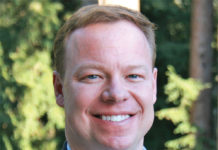Exactly a year ago I couldn’t drink a glass or bottle of water with one hand; I was a two-handed drinker. I was unable to use my toothbrush without using both hands. I couldn’t carry a plate across the room without it bouncing up and down. Using my computer mouse was a challenge. It would circle around where I needed it to click, but to actually “hit the mark,” I found it necessary to grab my wrist with my other hand to steady it.
I couldn’t draw a straight line or make a circle. They were wavy.” The nice handwriting that I once had was gone. Sometimes I couldn’t even read my notes to myself. Forget pouring a glass of water from a pitcher, or eating without sometimes wondering if I would get the fork or spoon into my mouth. Soup was definitely out!
This condition interfered with every small motor skill that I used to be able to handle with no problems. My condition is referred to as Essential Tremor (ET), sometimes called Familial Tremor, because it tends to run in families. In my case, my maternal grandmother, mother and younger sister all had the same condition. It can sometimes be confused with Parkinson’s, although the two conditions are not related.
An estimated 10 million Americans have ET. It progresses with age, so it’s more common in older people (I’m 76, and remember starting to notice it in my early 50s).
I had been seeing an excellent neurologist for years, who prescribed a couple of different medications that helped for several years to make things a bit better. But I had reached the maximum dose and they were no longer helping much. My doc had told me a couple years ago about a brain surgery they were doing very successfully at Stanford, called Deep Brain Stimulation Surgery (DBS), and I was finally ready to go for it.
Brain surgery sounds a bit scary…but this procedure has a 99% success rate. It’s been around for more than 20 years, for Parkinson’s, ET and epileptic patients. DBS “resets” the faulty brain signals that cause the tremors. The neurosurgeons implant a Boston Scientific device that produces electrical impulses to disrupt irregular brain signals that cause the involuntary movements. Microelectrode recordings are used to make sure the electrodes are inserted into the right place.
My procedure lasted six hours. I was “asleep” for the first two hours, then awake for two hours so I could be “tested” to make sure everything was working. Could I hold my hands steady? Could I now draw a straight line? A circle? My lines were crooked at first, and when the surgeon moved the wires to the right muscle, my lines became perfectly straight, and my circles were round! I found myself crying at that point…while the Stanford students in the room were cheering!
I had no pain while this was being performed. The brain has no pain receptors. I stayed overnight in the hospital for observation, went home the next morning, and came back a couple weeks later for Part 2 of the surgery…tucking my “wires” in behind my ear and running them down to my chest, where I have a small battery that I charge every week. The charging takes about 45 minutes, and I watch TV or read while it’s happening. When it beeps, I know it’s fully charged. (I was also given the option to have a battery that didn’t need to be charged for several years, that would need Stanford to recharge it.)
The surgeons consider any improvement over 60% a success. While I would have been thrilled to have a 60% improvement, I feel that my condition is closer to 90% improved.
So that’s my miracle. I am grateful every day for the improvement this has made in my everyday life. I’m still amazed when I drink with one hand, and when my mouse moves to the right place to click. I thank Dr. Vivek Busch and his Stanford neurosurgery team every single day for the new life they’ve given me.
Diane Shaver has lived in Scotts Valley for 48 years with her husband Ron (recently deceased) and two sons. She and Ron owned a T-shirt and skateboard screen printing company for 12 years. She now is “semi-retired” as an independent dealer for a large promotional products firm, working out of her home. Her hobbies are writing, raising orchids and other indoor plants. She welcomes questions regarding her surgery. Email di***@******az.com.













